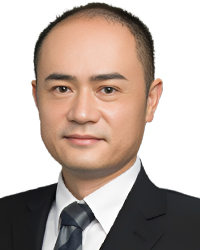The patent holder of a lock invention (client) has discovered that company A has produced a counterfeit patented product without obtaining authorisation or permission. The product was then handed over to company B for processing, and subsequently sold to a foreign trade enterprise (customer) as an electrical accessory, to be installed in electrical products and sold in overseas markets.
In seeking intervention of administrative authorities to address the patent infringement, the client’s legal representatives successfully established the fundamental facts of infringement by companies A and B. This led to negotiations and a settlement between all parties involved, resulting in the client receiving substantial compensation within a short period of time. Furthermore, it enabled the client to maintain a positive trading relationship with the customer, and regain an advantageous market position.
CHALLENGES FOR DEFENCE
Difficult to prove. The infringing products are accessories for exported appliances and not circulated in the Chinese market, making them difficult to obtain.

Partner
ETR Law Firm
Lengthy avenues of redress. If the client seeks to defend their rights through civil or criminal litigation, the process may take a significant amount of time. Even if they ultimately win, the commercial lifespan of the relevant patented product could have already ended, making it impossible to achieve the goal of quickly regaining market share and rendering the effort to defend rights meaningless.
Low compensation. Compensation awarded in a conventional civil action, if successful, often falls short of actually compensating for the loss suffered. In comparison to the direct economic loss, the amount awarded has little significance in terms of providing adequate redress.
Negative impact on trading. Given the risks associated with commercial confidentiality and product infringement, open civil or criminal proceedings may not be favourable for maintaining a sustainable and positive relationship with customers.
The client’s desired outcome includes:
(1) establish the fact of infringement;
(2) hold the infringer financially accountable; and
(3) remove the infringer from the market, allowing the client to sustain a positive trading relationship with the customer and maintain an advantageous market share.
Settlement proposal. In light of these objectives, the lawyers proposed to “file a patent infringement dispute with the administrative authorities and promote an out-of-court settlement”.
There were several challenges associated with this solution. Most importantly, it can be tricky for such cases to even be accepted, and there is little guarantee that the administrative authorities will conduct an effective investigation into the alleged infringement and collect relevant evidence.
Additionally, the respondent may file a declaration of invalidity, which could result in suspension of the case.
CHOOSING BATTLES
To address these challenges, it is essential that lawyers have a sound understanding of the relevant provisions of patent law and administrative enforcement, as well as the competence and scope of duties of the administrative authorities in such cases. Effective communication skills are also essential.

Partner
ETR Law Firm
The case, after nearly one-and-a-half months of persistent and patient communications with the authorities, was ultimately accepted, and the administrative procedure was initiated.
According to relevant provisions on administrative enforcement of patents, it is not considered an “obligation” of administrative authorities to conduct on-site investigations and obtain evidence samples when dealing with such cases.
However, taking into account the objective difficulties faced by the client in collecting evidence on their own, as well as the fact that the product in question was not in circulation in the Chinese market, the client’s lawyers successfully persuaded the IP authority to investigate the site in question and obtain the necessary infringing samples.
To counter the client’s efforts to defend its rights, company A raised a defence arguing that its products were not covered by the patent in question, and that it had prior right to use the technical solution of the patent.
It further claimed that the technical solution in question was part of the prior art and did not constitute patent infringement. In addition, company A requested invalidation of the patent, causing the case to be suspended, and allowing it to continue producing and supplying the infringing products, and continuing to make illegitimate profits.
But during an on-site demonstration, the client’s lawyers compared the technology used in the infringing products with the technical features of the patent in question and determined that they were “completely compatible”.
In response to the arguments of prior art and prior use, the team also provided counterarguments based on relevant legal provisions and case evidence, ultimately refuting all claims and evidence presented by the respondent.
To resolve the impasse of the case being suspended, the lawyers considered the third-party customer’s high reliance on the client’s patented products, and the real pressure they faced due to risk of potential international commercial default resulting from the alleged infringement of IP rights by the exported appliances.
Eventually, they persuaded the customer to participate in a settlement and jointly exerted reasonable pressure on companies A and B, which led to swift settlement among the parties.
After more than a month of negotiations between the parties, companies A and B, the infringers, confirmed in writing the infringement and the facts, and provided a one-time compensation to the client for all economic losses. They also committed to cease the infringement and withdrew their request for patent invalidation from the Board of Patent Appeals and Interferences of the CNIPA.
The case was resolved in about four months using an “administrative solution + commercial interest intervention + settlement” approach, which can take two to three years, or even longer.
KEY TAKEAWAY
The key to effectively handling such cases as a lawyer includes knowing how to get the case accepted by administrative authorities, how to seize the infringing product in question, and how to achieve the client’s objectives within a reasonable timeframe.
When the respondent files a declaration of invalidity and deliberately delays the process, lawyers representing the rights holder must take effective measures to make the respondent abandon such a bad-faith approach, agree to settle voluntarily, and pay a sufficient amount of financial compensation within a short period of time. This process puts the experience and skills of the lawyers to the test.
Huang Zuoliang and Zheng Yanli are partner attorneys at ETR Law Firm
10 & 29/F, Chow Tai Fook Finance Centre
No. 6 Zhujiang Dong Road
Guangzhou 510623, China
Tel: +86 20 3718 1333
Fax: +86 20 3718 1388
Email:
lawyer.h@163.com
natashaxj@163.com






















